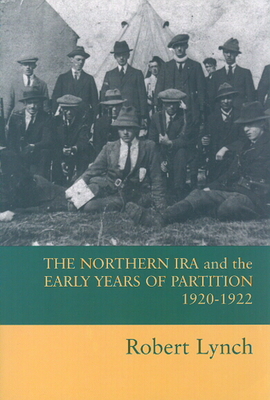The Northern IRA
Fintan Lane reviews The Northern IRA and the Early Years of Partition, 1920-1922, by Robert Lynch, Irish Academic Press, ISBN 0 7165 3378 2, £19.95 pbk

THE RELEASE in recent years of the Bureau of Military History Witness Statements means that historians are now able to draw on the accounts of a significant number of War of Independence IRA activists from across the island; this has allowed researchers, such as Robert Lynch, some access to the innards of local IRA units, enabling a textured view that hitherto was difficult to achieve.
Lynch's scholarly study of the Ulster IRA between 1920 and 1922 benefits from his close attention to a wide range of archives in Ireland and Britain, but this is no dry academic tome. Indeed, the quick pace of the narrative seems appositive for the story of violence, betrayal and bitterness that it recounts, with Lynch explaining in fine detail how an IRA force, several thousand strong, had utterly collapsed by 1925, at which stage the Northern Ireland authorities confidently reckoned that there were no more than 300 IRA members left within the state and even fewer active Sinn Féiners.
This book is particularly important because of the remarkable geographical imbalance in scholarship on the Irish War of Independence. Much has been published on the southern IRA and its activities, but the conflict in the region that became 'Northern Ireland' has scarcely been examined, despite the bloody baptism that inaugurated the Unionist statelet. It is worth remembering that more than 600 people lost their lives in this area, mostly in Belfast, in the short period between June 1920 and June 1922, and the conflict had a significant sectarian dimension. Lynch is even-handed in his depiction of the violence and records also the murderous activities of death squads drawn from the 'security forces'.
One hopes that this regional study will encourage yet more work on the early IRA in Ulster, perhaps at a more micro-level, as it would be interesting to see an exploration of the interplay between sectarianism (from both pro-state and anti-state elements) and the activities of republican militants. Lynch suggests that the IRA attacks unleashed, or at least encouraged, anti-Catholic violence in Belfast and this claim, although hardly novel, deserves further study. As the historian Catherine Hirst has pointed out elsewhere, sectarianism in Belfast was sensitive to political agitation from the 1840s onward
This is a fascinating and well-written book that enhances our understanding of the origins of the Northern Ireland statelet.
Connolly Association, c/o RMT, Unity House, 39 Chalton Street, London, NW1 1JD
Copyright © 2007 Fintan Lane

